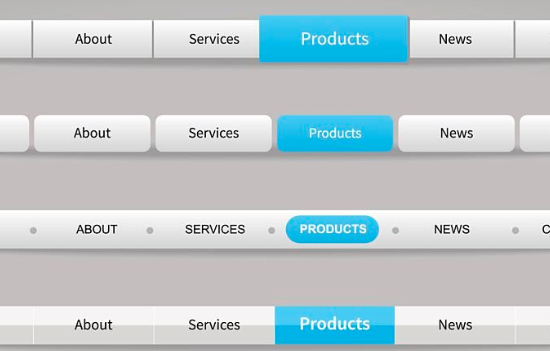Are you looking for security of your network devices? A firewall is a network security device that monitors incoming and outgoing traffic that is based on previously established security policies of the organization. They establish a barrier between secured and controlled internal networks that can be trusted or untrusted outside networks such as the internet. It allows or blocks specific traffic based on the defined set of rules and policies. The main purpose of the firewall is to allow non threatening traffic and rush in and to keep the dangerous and bad traffic out. Network security devices are used to mitigate and stop unauthorized access to private networks that are specifically connected to the network and internet, especially intranets.
Firewalls came into existence in the 1980s and started as packet filters, which were networks set up to examine bytes, packets, transferred between computers. These packet filtering firewalls are still in use but they have come a long way as technology has developed throughout decades. Firewalls have always been the first line of defense in network security for years.
Firewalls act as a gatekeeper that monitors attempts to gain access to your operating system and blocks unwanted traffic from unrecognized sources. This is a necessary part of any security architecture and entrusts them to your network security firewall device. Firewalls focus on blocking malware and virus attacks along with an integrated intrusion prevention system IPS. These firewalls may react quickly and easily to detect outside attacks across the overall network. They set policies to defend your network in a better way and carry out assessments quickly to identify invasive and ambiguous activities to shut them down for safety and network security purposes.
Let’s discuss the generations.
1- virus – virus attack on the stand on Personal Computers affected all businesses and drove anti-virus products in the late 1980s.
2- Networks – attacks from the internet affected all the businesses and drove the creation of the firewalls in the mid-1990s.
3- Applications – exploitation of vulnerabilities in applications that almost affected most of the businesses and drove IPS intrusion prevention systems products in the early 2000s.
4- Payload – a rise of the unknown, targeted, polymorphic, and evasive attacks affected most businesses and drove anti-bot and sandboxing products in approx. 2010.
Gen 5 Mega – multi-vector, large scale, mega attacks using advanced attack tools that drove advanced threat prevention solutions in approx. 2017.
Firewall Features
Today’s firewalls support a wide variety of functions and capabilities with a wide range of features given below;
1- Network threat prevention
2- Identity-based control
3- Hybrid cloud support
4- Scalable performance
5- Application-based control
Stateful Inspection
It is a packet filtering that monitors active connections to determine and identify which network packets to allow through the firewall and which are not to allow. This is also dynamic packet filtering.
Proxy service
It is the network security system that protects and saves while filtering messages at the application layer.
Packet filtering
A small amount of data that is analyzed and distributed according to the filter’s standards.
Next-Generation Firewall
It is a deep packet inspection firewall with an application-level inspection.
Next-Generation Firewalls (NGFW)
Sangfor’s firewall that combines traditional firewall technology with additional functions such as intrusion prevention systems, encrypted traffic inspection, anti-virus, and more. Sangfor’s firewall also includes deep packet inspection DPI but basic firewalls only look at headers of the packet. Deep packet inspection examines the data within the packet itself. It enables users to more effectively and efficiently identify, categorize, and stop packets with malicious data.
Cloud-Based Firewalls
Cloud-based firewalls are also known as firewall as a service (FaaS). One of the benefits of cloud-based firewalls is that they can grow with your business and organization. They do and perform well with perimeter security just like hardware firewalls.
Virtual Firewalls
This type of firewall is an appliance used in a cloud-based system, both public or private. A virtual firewall is used to access and manage internet traffic over both virtual and physical networks.
Proxy Firewalls
A firewall that filters the traffic at the application level. It is not like basic firewalls. This firewall acts as an intermediary between two end systems. The client sends a request to the firewall, which is then evaluated against a specific set of security rules and safety policies. Depending on the evaluation, the request is either permitted or blocked. In addition, proxy firewalls utilize both deep packet inspection and stateful inspection to effectively detect viruses and malicious traffic. Therefore, by employing these techniques, proxy firewalls enhance network security and protect against potential threats.
Difference between Host-Based and Network-Based Firewalls
A host-based firewall is different from a network-based firewall along with the benefits of having both in place. Network firewalls filter traffic going to and coming from the internet to secure and save local area networks (LAN). They typically are used by businesses that need to protect a large network of servers, computers, and employees. A network-based firewall can monitor communications between a company’s computers and outside sources, as well as restrict certain websites, IP addresses, or other services. Host-based firewalls work almost similarly but these firewalls are stored locally on a single computer or device. A host-based firewall is a software application or a suite of applications that allows for more customization. They are installed on each server, control incoming and outgoing traffic, decide whether to allow traffic to individual devices, and protect the host.
Firewall at Home
Similar to the firewall at business places, firewalls act as the first line of defense in home network security. Since home networks are often the least protected devices, implementing a robust network security system is essential. Ensure all your internet-enabled devices, especially mobile devices, have the latest versions of their operating systems, security software, and web browsers. Additionally, secure your wireless router by changing the default ID and password provided by the manufacturer.













Leave a Reply